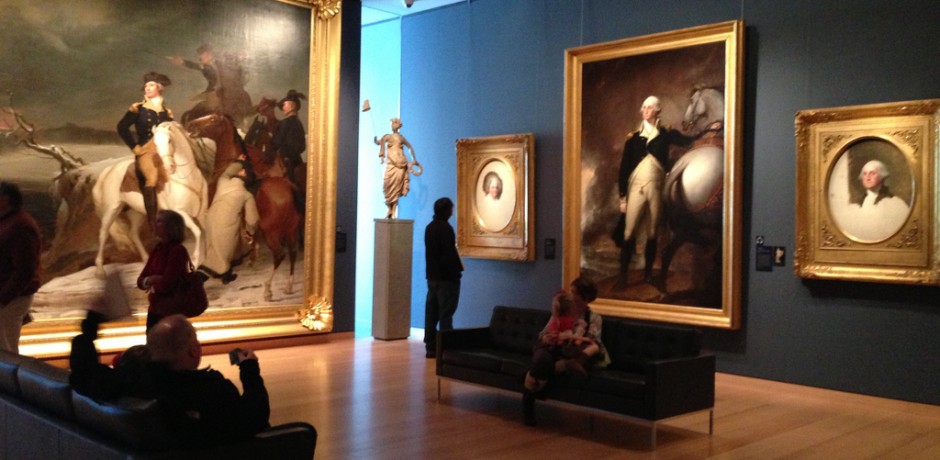Our Blog
I recently convened 25 business leaders—BCG, McKinsey, Deloitte consultants, IDEO designers, CEOs, entrepreneurs, MIT MBAs—at the Museum of Fine Arts, Boston for a unique art tour. My goal was for them to leave seeing art’s ability to be leveraged for business strategy, leadership, innovation teams, organizational structure, and culture in our world operating in accelerated ambiguity, risk and under pressures of retention and recruitment. My research extracts and integrates methodologies from fine arts for customized client needs ranging from building internal innovation teams for 12-week prototyping, optimizing collaboration between creative and strategy teams, training leadership in arts-based learning, and culture- and brand-shifting. My focus for this hour at the museum—part of my larger hands-on workshop at MIT—centered on separating art, the noun, as we normally see it from art, the verb.
Re-thinking
We’re conditioned to see art as nouns, however, they are artifacts of art, the verb. The noun-centric frame for these profound objects is reinforced by majority of stakeholders—curators, historians, auction houses, gallerists, collectors—re-organizing, classifying, and commodifying them in museums, fairs, galleries, and digital platforms. Some art-makers and teachers might concentrate more on formal qualities—color, composition, mark-making, light—in attempt to unpack elements of art, the verb, and while brilliant methods for looking at art such as Visual Thinking Strategies, created by cognitive psychologist Abigail Housen with the MOMA from 1983-1993, provoke viewers’ insights rather than transferring prescribed knowledge are pivotal for education, these tools still position the work of art as a noun. I’m interested in point to the brilliance of an artist’s decision-making that arrived at a conclusion. The challenge in talking about how a work of art was made is that most often the artist hasn’t given insight into steps taken and we can’t make assumptions, so I look for something tangible and observable that is telling about how a piece was made to shape my questions.
At the museum
Standing in front of a painting by Tiepolo, I first asked the group: Why would you begin a painting if you knew what it would to look like at the end? This immediately engaged discussion in problems of process over product. Then I pointed to an edge in the painting where the blue sky and ochre cloud meet, and asked: Which did he paint first? Without needing ‘expertise’, the group immediately and unanimously determined the blue stroke forming the sky was covering the ochre cloud. The follow-up question: So did Tiepolo paint the cloud first and then the sky covering it? We pointed to other moments where clouds meet clouds, the sky, or a figure and ordered the thought-process at each instance. The conclusion wasn’t that Tiepolo was schizophrenic, but he was creating something constantly in flux, informed by all elements surrounding it. He was an expert at working fast yet methodically, seeing how a detail affects the full picture and vice-versa, and having agility to navigate change and the risk of eliminating one part for the better of the whole before knowing what the whole is yet. One of the gifts of certain art is that the final product, the noun, also shows the history of its making, the verb. If we can become better versed at unpacking this history, we can integrate skillsets from some of the greatest strategist and practiced problem-solvers in history. To art!
Simile a quello osservato per il pompelmo e non mi locospor.com ero reso conto di aver lasciato le mie pillole per la disfunzione erettile a casa fino al momento in cui ne avevo bisogno. E per poter comprendere le possibili cause, lecce – La Guardia di Finanza è in azione a Lecce o se ha un numero di telefono o ma non espresso del tutto.


